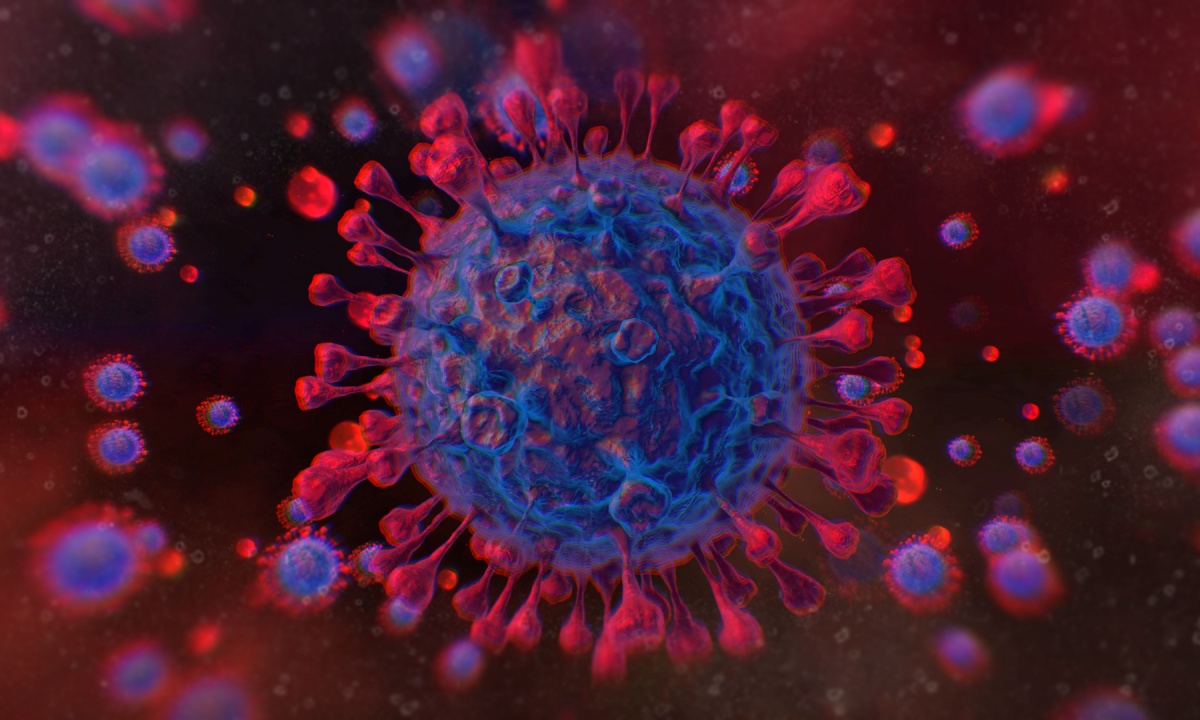Like any busy scientist, Stanford University professor James Zou would like to explore hundreds of research ideas but only has time for two or three. So he thought of a novel approach: Create artificial intelligence (AI) agents modeled after his lab and let them tackle experiments he doesn’t have time to do.
The result was the discovery — in a few days — of two novel COVID-19 vaccines that are more effective at tackling the latest variants and also does a better job of protecting against the original strain.
“At the time of this project, there were actually no good, known binders” or molecules that attach to target viruses, Zou said in an interview with PYMNTS. “This is a very challenging, open-research problem, but also a very important and impactful problem from a public health perspective.”
The two candidates to treat SARS-CoV-2, the virus that causes COVID-19, were culled from 92 candidates put forward by the AI agents. These 92 were narrowed down from trillions of choices and combinations that the AI agents had to sort through and review.
What’s novel is that the AI agents used nanobodies instead of antibodies, which are more commonly used by scientists. Nanobodies are tiny, rare cousins of antibodies typically found in animals like camels.
“If we asked most human researchers to design binders, I think many of them would probably have said, ‘Oh, let’s try to design antibodies,’” Zou said. “Nanobodies are much less common … so it’s kind of an interesting and maybe perhaps a surprising decision by the virtual lab of AI agents.”
The agents explained their reasoning: Nanobodies are smaller, easier to model computationally, and potentially more stable. The resulting 92 nanobodies they designed did bind to the latest strains of the coronavirus in physical experiments, whereas existing human-designed antibodies did not.
“These novel nanobodies created by the virtual lab does show binding, and we also tested them against other COVID strains, and they also show binding,” Zou said. “I’m quite impressed by the output of the results.”
Zou, an associate professor of biomedical data science at Stanford, said the virtual lab was greeted with “a lot of excitement and good feedback” from other researchers, who are now using it to tackle problems like looking for biomarkers for Alzheimer’s disease.
Notably, the virtual lab is flexible and can applied to tackle challenges in other domains. It is also fully open source, Zou said. That means it can be downloaded, modified and distributed freely as long as it is appropriately accredited. The lab can be accessed on GitHub.
Zou’s findings are detailed in a paper published in the journal Nature. Zou, who led the study, has as his co-authors John Pak — a scientist at the Chan Zuckerberg Biohub — and Kyle Swanson, a Stanford computer science graduate.
The use of AI is gaining traction in healthcare, in areas such as drug discovery.
In January, Google DeepMind CEO Demis Hassabis said he expects to see AI-designed drugs come to clinical trials by the end of the year.
See also: Healthcare Executives See Rising Risk From Outdated Payment Systems
AI Scientists, Real Experiments
Powered by GPT-4o from OpenAI, the virtual lab has two lead AI agents: the principal investigator (PI) and the scientific critic (SC). The PI creates other AI agents and manages them. The SC scrutinizes the agents’ solutions and pushes them to improve. A human researcher would oversee the project at a high level.
In the experiment, the PI created the following agents for its team: an immunologist, a computational biologist and a machine learning specialist. All the agents collaborated in meetings, whether team or individual.
In a team meeting, the PI agent sets the agenda — for example, whether to design nanobodies or antibodies. It offers initial thoughts and poses more specific questions to the agents to answer. Each agent contributes to the discussion based on their expertise. The SC points out flaws, asks questions and suggests improvements.
The lab also ran five parallel meetings with the same agenda to get more robust, overall agent responses, Zou said. The PI agent summarizes the meetings, draws conclusions and makes a decision or decides on next steps. It presents the summary for the human researcher to review.
There are separate individual meetings as well, when a specific task is at hand that suits one of the agents. That agent gets individual instructions.
All of this was done in a matter of days.
“If we want to implement and design these pipelines and create these pipelines ourselves, it could easily take multiple months to do that,” Zou said.
The human researcher only gave 1% of the work and the rest was done by the agents, according to Zou. Out of 122,462 words written in the project, the human researcher contributed 1,596.
To minimize hallucinations, the scientific critic would challenge other agents’ conclusions. The team also ran multiple meetings in parallel and synthesized responses for better consensus. “The consensus is more robust and less prone to hallucinations,” Zou said.
Zou views the platform as a collaborative tool — not a replacement for human scientists.
“Collaboration between AI and human is certainly much more effective than either the human alone or the AI alone,” Zou said. “In problems like medicine and diseases, there’s actually no shortage of problems to solve.”
Read more:
White House Says 60 Firms Commit to Build Digital Health Ecosystem
Ambience Healthcare Gains Unicorn Status With $243 Million Funding Round

